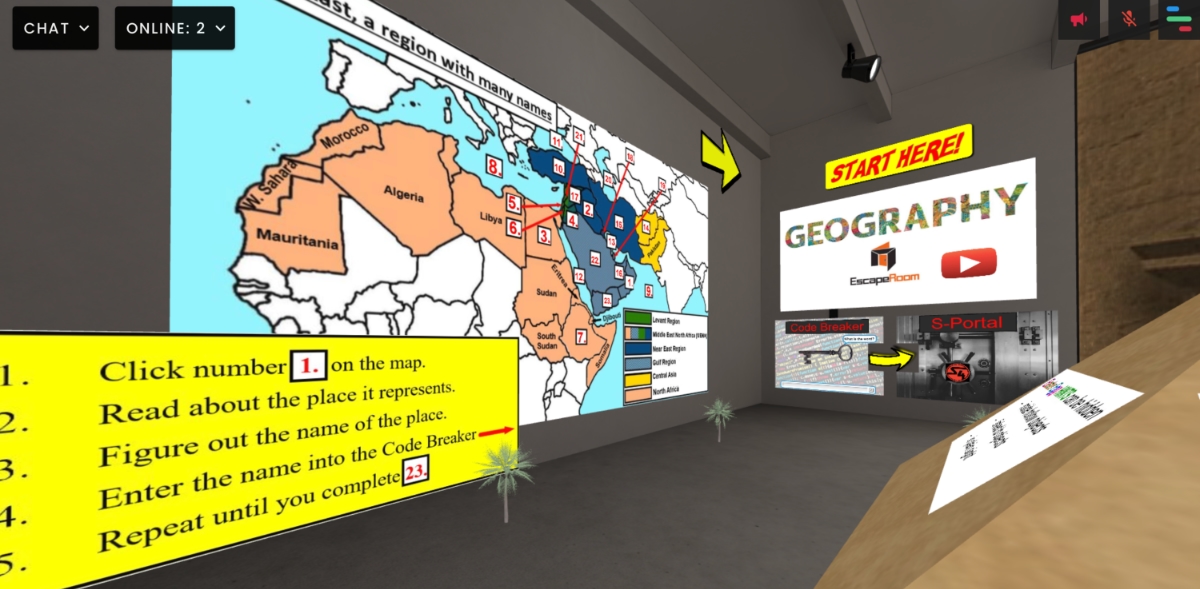
By Jeremy Royster
Like most of my teachers growing up, when I started teaching in 1998, I relied heavily on practice drills and textbooks. Not surprisingly, I struggled to keep my students engaged. Why couldn't I get these kids to love learning as much as I did? Then I remembered. When I was their age, I spent most of my time daydreaming and doodling in class.
Just as I was beginning to recognize the problem, the late education luminary, Sir Ken Robinson, had already discovered the solution. As early as my first year of teaching, Robinson realized that to encourage greater engagement in schools, the world's Industrial Era teaching model would have to go. Rather than moving all students in herds on the same assembly line designed to produce compliant workers, Robinson called for personalized curricula that targeted individual interests and skills.
I soon realized that I didn't develop a love of learning until I graduated from college. Only then could I choose to learn anything I wanted on a whim, work at my own pace, pick my learning materials, or change "course" if I lost interest. Only then did I start to love learning.
In 2006, Robinson gave a TED Talk entitled "Do Schools Kill Creativity?" In it, he said, "You'll never come up with anything original -- if you're not prepared to be wrong. And by the time they get to be adults, most kids have lost that capacity. They have become frightened of being wrong. And we run our companies like this. We stigmatize mistakes. And we're now running national education systems where mistakes are the worst thing you can make. And the result is that we are educating people out of their creative capacities."

Robinson's performance has since garnered more views than any other TED Talk in history. He struck a chord. And yet, as of this writing, the "Learning Revolution" he called for hasn't materialized. Despite its importance among the skills advocated by Bloom's Taxonomy, creative development traditionally receives less attention in school than skills at the bottom of the pyramid, like memorization. One reason for this is that creativity is difficult to measure objectively. All higher-level thinking skills are difficult to assess. Is it any surprise that our test-driven educational system relies so heavily on multiple-choice, fill-in-the-blank, one-possible-answer assessments? It's not just creativity that the education system kills. Perhaps we should be asking, "Do schools kill the fun in learning?"
It's for this reason I developed "Find Indy," the first in a series of virtual reality (VR) educational escape rooms (EscapEDX) in partnership with Knowledge Avatars. This revolutionary role-playing game (RPG) pits students-as-avatars against the villainous S-Quad. They search for Indiana Royster, journalist, and truth-sleuth extraordinaire. Hidden clues help players complete critical thinking tasks as they attempt to find Indy before the S-Quad silences him forever.
EscapEDX players gain 21st Century, Social Emotional Learning (SEL), Common Core, and Bloom's higher-order thinking skills. They also build resilience as they persist through challenges and failures in pursuit of a larger goal. As they move from room to room, players unwittingly teach themselves various success strategies. They collaborate with other student-avatars and develop pointed questions for the resident teach-Bot, Angela. Further, students learn about the intersecting and overlapping nature of concepts through interactive content webs.

Perhaps the most influential inspiration for EscapEDX, other than Sir Ken Robinson, is Daniel Pink, author of "Drive: The Surprising Truth About What Motivates Us." Pink's research found that traditional rewards and punishments, the cornerstone of an ordered business, school, and family life, don't work. Not only do they not work, but they can also act as deterrents. Pink found that motivation, particularly concerning creative tasks, depends upon three conditions: opportunities for mastery, a sense of purpose, and autonomy. When these conditions are in place, the student, worker, or family member is motivated to perform tasks for the mere pleasure of performing the tasks. As it turns out, these conditions can easily be met by games that reach beyond leaderboards, points, and badges to incentivize engagement.
In games, opportunities for mastery are a given. According to Raph Koster, author of "A Theory of Fun for Game Design," games are "limited formal systems, that exercise our brains in a way that can be useful in real life." They are fun because they provide "that moment of triumph when we learn something or master a task… In other words, with games, learning is the drug."
And autonomy? Can you think of a game without freedom of choice?
With "Find Indy," my students' classwork serves a larger purpose. Aspiring Truth Sleuths want to learn more to facilitate decoding of the "clues" that I placed throughout the virtual room. For example, before students can find Indy, they need to understand how to translate cuneiform, read a map, synthesize information from conflicting sources, or comprehend a primary source. The potential reward was the satisfaction that would come with surmounting each problem, not some arbitrary badge or point system. In other words, learning became the focus. Understanding became fun!
Classroom licenses are available for Where's Indy in the Middle East. A family can get in the action together as well with an affordable family plan.
